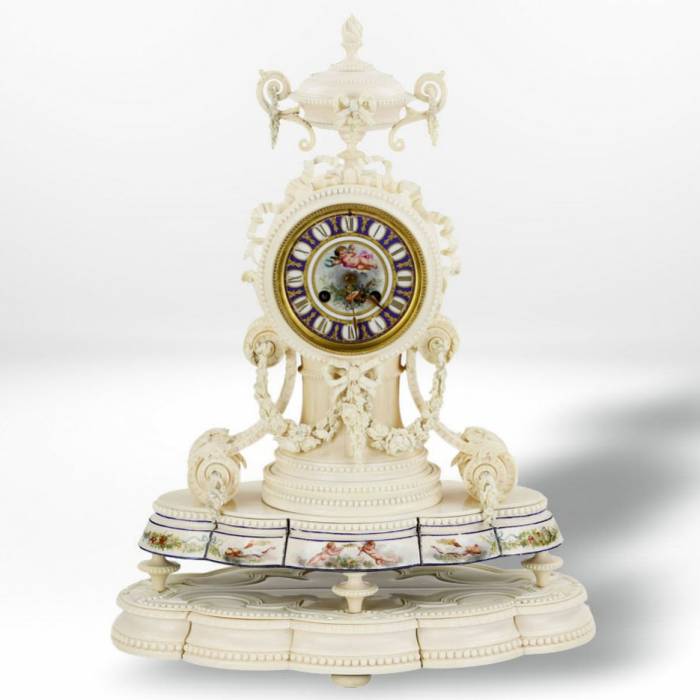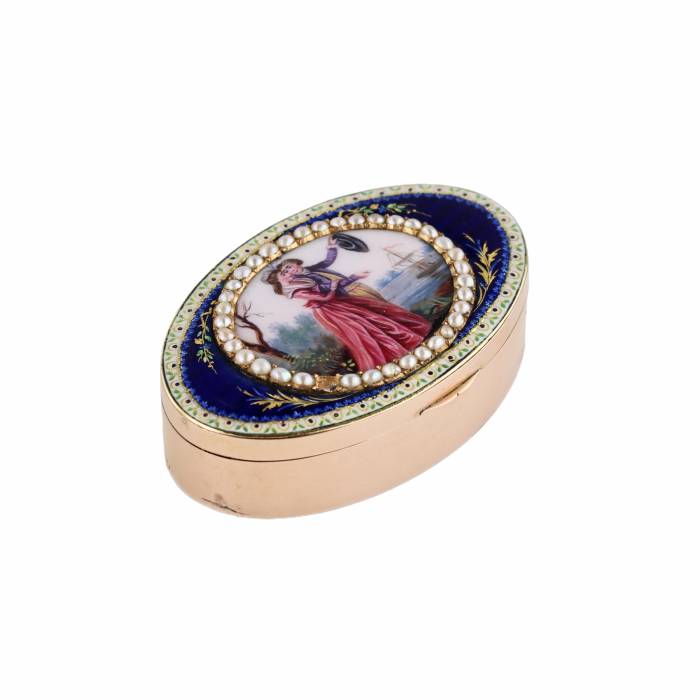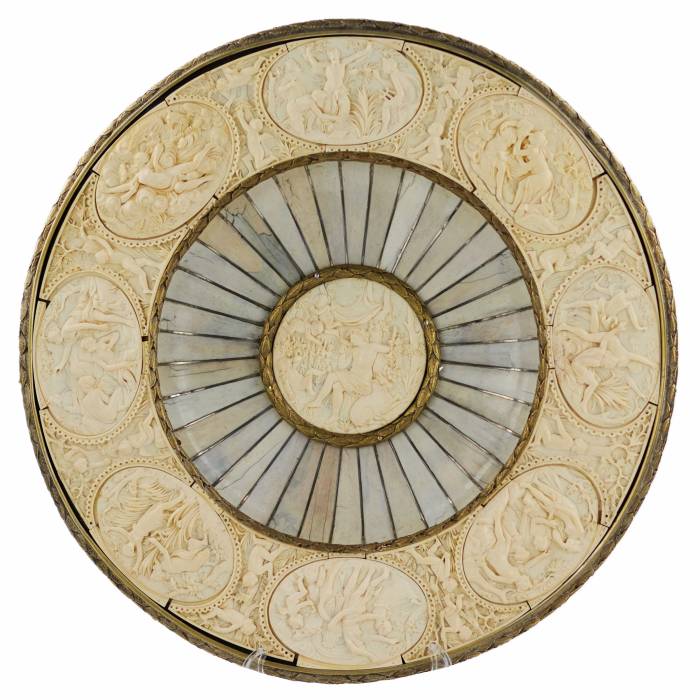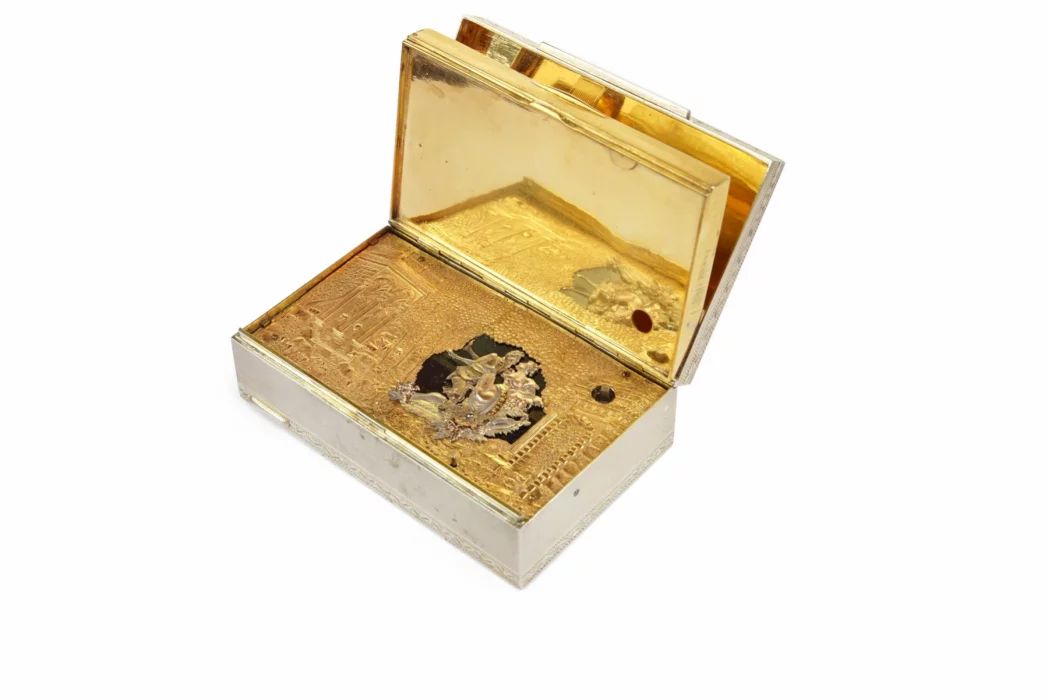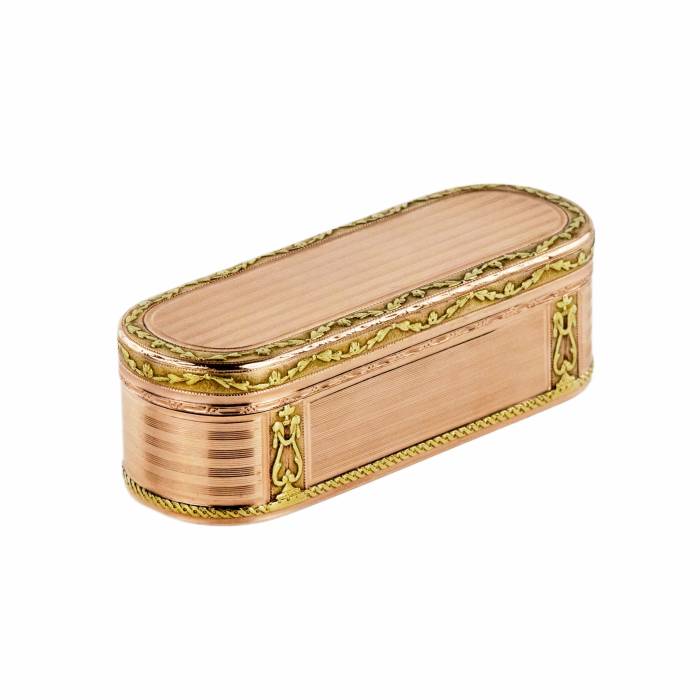
AntiqonART consultant will contact you within one business day after receiving your request.


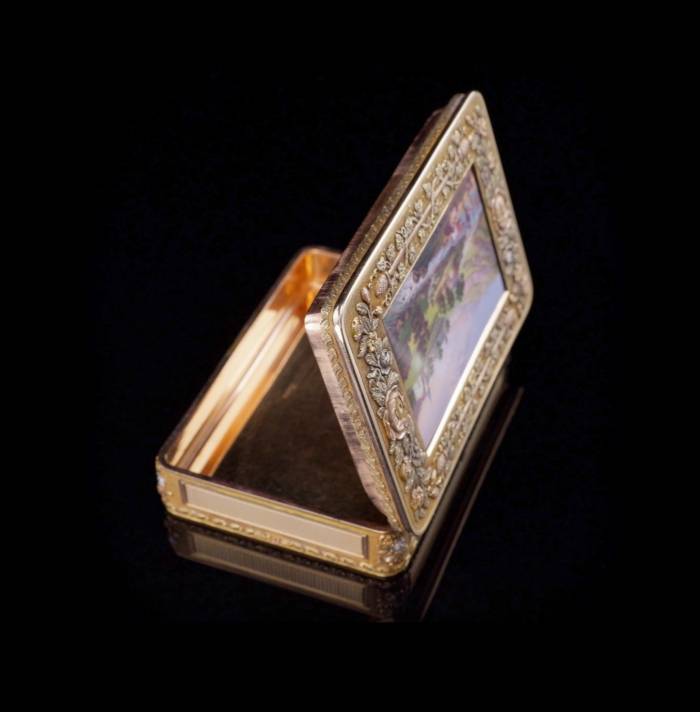














Discover how the value of similar works has evolved over the past 10 years. Art is not only beauty — it's an investment.
Discover how the value of similar works has evolved over the past 10 years. Art is not only beauty — it's an investment.
Antiqon ART offers free packaging, insurance, and delivery for most items purchased through the company.
Poinçons : Marque complète « KEIBEL » en lettres latines, poinçon de la ville de Saint-Pétersbourg avec la date 1822, poinçon de l’essayeur « АЯ » (Alexandre Ilyitch Yachinov), et numéro d’inventaire « 447 ».Dimensions : Longueur : 10 cm | Largeur : 4 cm | Hauteur : 1 cmPoids : 125 grammes
Provenance : Sotheby’s, 4 juin 1998, lot 56
Comparatifs muséaux : Des pièces similaires signées Keibel sont conservées dans les collections permanentes de l’Ermitage et du Musée Fabergé à Saint-Pétersbourg, où elles sont considérées comme des chefs-d’œuvre de l’art décoratif russe impérial.
L’objet est en état exceptionnel, conforme aux standards muséaux. La miniature en émail est parfaitement conservée, sans fissures, restaurations ni pertes de matière. Les détails sont nets et les couleurs vives. La surface montre seulement de légères traces de vieillissement naturel. Les éléments décoratifs en or tricolore sont intacts, sans usure ni déformation. Le fond guilloché est net, sans défauts. L’intérieur conserve son poli miroir.Les poinçons sont nets et lisibles, y compris « KEIBEL », le poinçon de Saint-Pétersbourg (1822), le poinçon de l’essayeur « АЯ » (Yachinov) et le numéro d’inventaire « 447 ».Aucune modification ultérieure. Pièce entièrement authentique.
The condition report is provided for informational purposes only.
It is not comprehensive and may not reflect all defects, restorations, alterations, or adaptations, as Antiqon does not perform professional conservation-level assessments. The information is based on a qualified, yet subjective, evaluation by our specialists.Before purchasing, we recommend consultation with an independent expert.Please also consult our Terms and conditions and Glossary A-Z, which contain important information on lot characteristics and sale conditions.
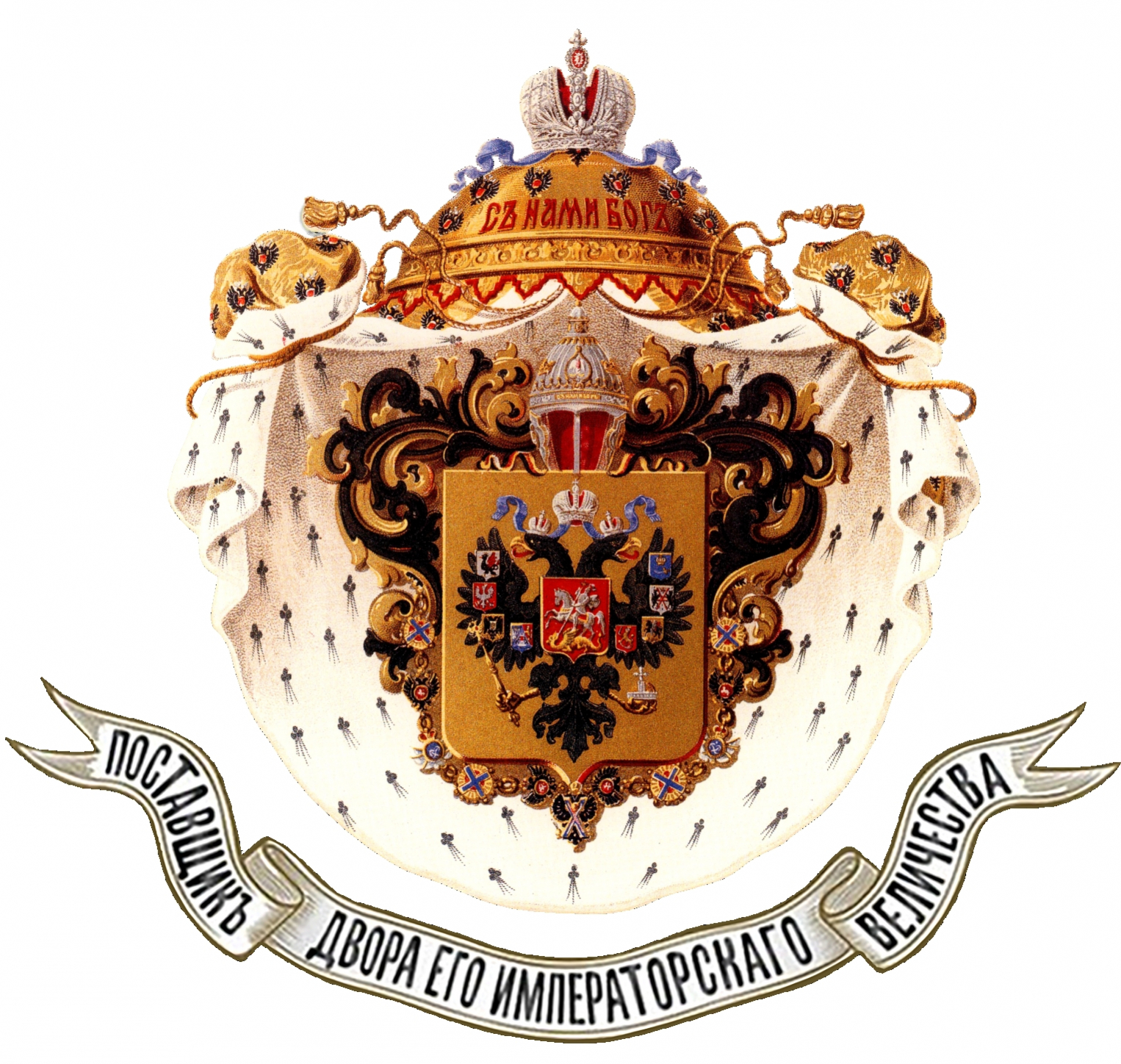
Thank you for your request!
Our consultant will contact you soon.

AntiqonART consultant will contact you within one business day after receiving your request.
Thank you for your request!
Our consultant will contact you soon.

AntiqonART consultant will contact you within one business day after receiving your request.










